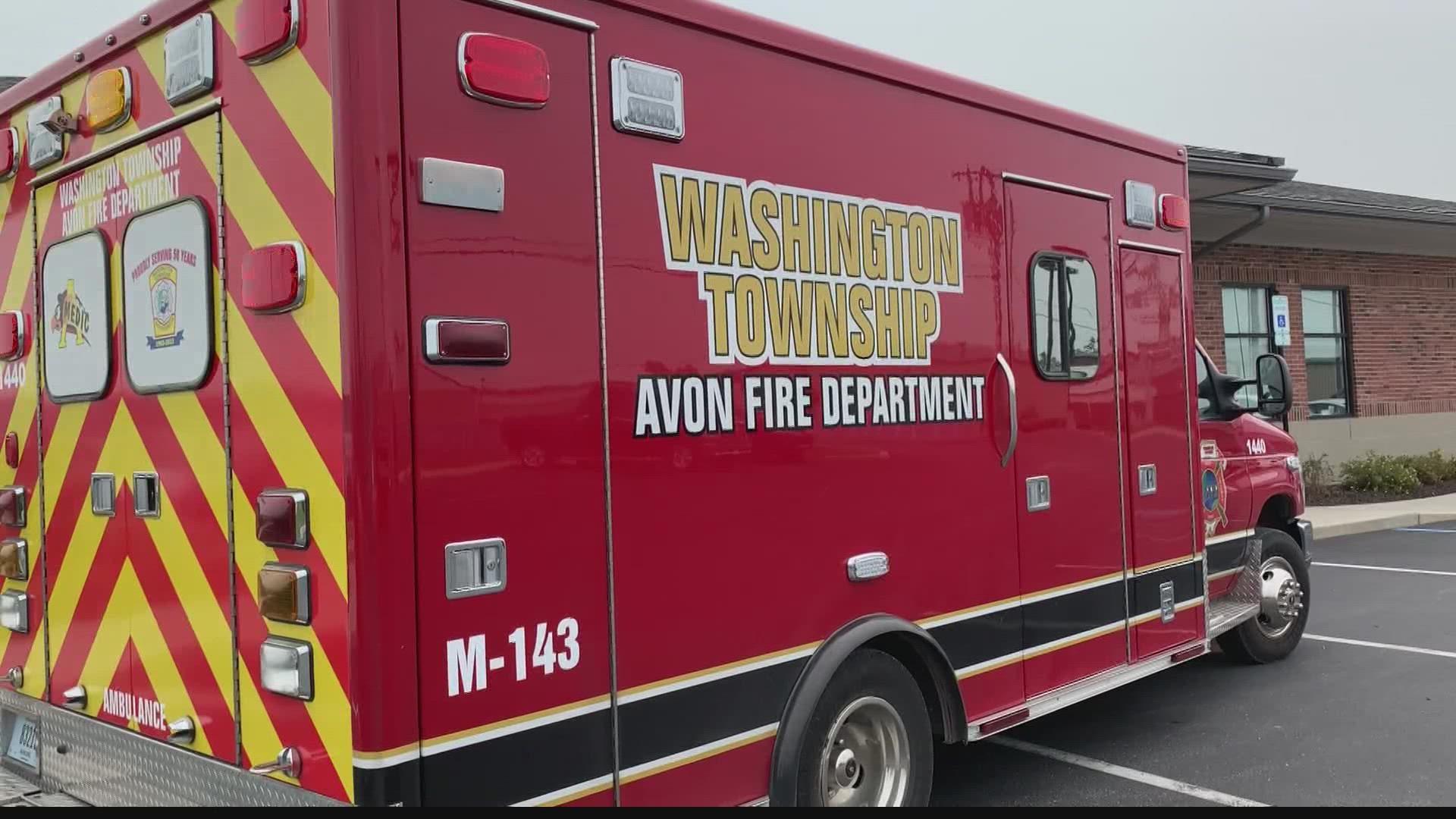INDIANAPOLIS — When we shop, we compare prices. From clothing to cars, we know how much we're paying for a purchase.
But when it comes to health services, we often find out the price only after the fact.
What happened
Last December, Yarnin and Ruth Gal were out to eat when Yarnin had a stroke.
"He said 'I see a black cloud,'" Ruth recalled. "His speech got worse. I started to panic a little bit and I was asking 'please call 911 for me.'"
A Washington Township Avon Fire Department ambulance took them to Indiana University Health Methodist Hospital.
"It felt like in the movies. I couldn't believe that it's me sitting in the ambulance. My husband in the back there. I just turned my head sometimes to the back to see if he's alive," Ruth said.
After weeks in the hospital, an IU Health LifeLine ambulance transferred Yarnin in their low-risk ambulance, basic life support, to a rehab facility.
"It was not emergency. It was just transferring from one point to the B point," Ruth said.
Then came the bills.
The Ambulance Prices
The Washington Township Avon Fire Department charged $1,072 for the 13.1 mile emergency trip to the hospital, about $82 a mile.
IU Health charged $2,925 for the 8.5 mile non-emergency trip to rehab, about $345 a mile.
That’s more than double the price for a shorter trip that wasn't an emergency.
Ruth said had she not seen the first bill from the Washington Township Fire Department, she wouldn't have something to compare the second bill to.
"There is too much gap between the prices," Ruth said.
Shopping Non-Emergency Transports
Families in non-emergency situations can shop around for ambulance transports.
13News called four Indianapolis-area ambulance companies that quoted cash prices between $500-$1,600, a lot less than IU Health's transport.
Jonathan Hess, CEO of Athos Health, is a medical billing advocate who helps clients navigate the financial side of health care.
"Health care is expensive, it's truly expensive," Hess stressed.
He said shopping around is a must, once the dust settles.
"Ask the questions of 'why am I doing this? Are there other options?' If you go buy a car, you just don't just take a dealer's suggestion," Hess said.
But when you're shopping services, make sure you confirm with your insurance company who is in-network.
"What may seem cheaper in the short term, if it's out of network, may end up being more expensive," Hess said.
What did the ambulance providers say?
Washington Township Avon Fire Department said that their transport price is a decade old and that it will likely go up next year.
"Our township board sets the rates that we charge for our ambulance transportation. We actually advised our board a couple of weeks ago, that we would be bringing information to them towards the end of the year, so that we could look at the rates that we currently charge. Our rates have not been increased since 2011, and we are soliciting the assistance of our billing company to help us get a truer picture of what our rates are and should be. Our billing company uses a formula that takes into account several of the costs associated with a transport including staffing, vehicle, supply and fuel costs just to mention a few. We will be completing that exercise later this fall as we prepare the information for the board presentation."
IU Health, a non-profit, said:
"Patient medical transport charges typically include a base rate and mileage rate, plus the cost for medical equipment and personnel needed to safely care for the patient during the transport. IU Health is committed to working with all of our patients on their individual financial responsibility for their healthcare services."

